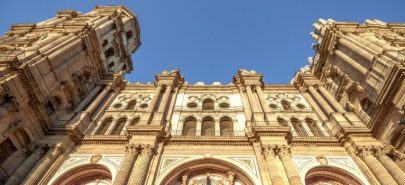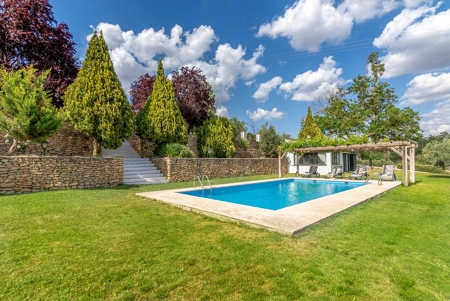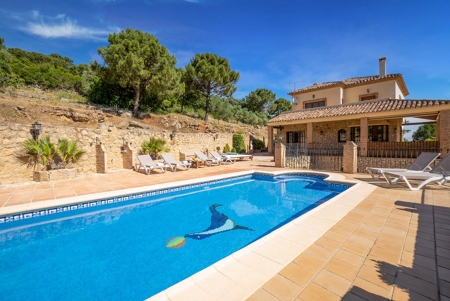Discover what to do and what to see in Ronda, thanks to Ruralidays. You will fall in love with the city and its fabulous views.
The city of Ronda charms everyone who visits it, thanks to its location, its splendid panoramic views and the spectacular Serranía de Ronda that envelops it, so much that even famous writers such as Ernest Hemingway and Rainer Maria Rilke fell in love with Ronda. Its romantic atmosphere attracts visitors from all over the world, who daily enjoy this picturesque town and its famous Puente Nuevo.
Ronda is located on a plateau, 750 metres above sea level. It’s divided into two parts by the Tajo, a 100-mt deep, 500-mt wide gorge, at the bottom of which the river Guadalevín flows.
Ronda is composed by three main areas:
- Ciudad, which is the first Roman and Middle-Age settlement.
- Barrio del Mercadillo, in the northern area of the city, which is connected to the Ciudad by three bridges (Puente Nuevo, Puente Viejo and Puente San Miguel). The district of El Mercadillo is the commercial area and that that has undergone the most significant enlargement. This district was built outside the walls of the Ciudad, to avoid the high taxes that the businessmen had to pay in the Ciudad district.
- Barrio de San Francisco, in the southern area.
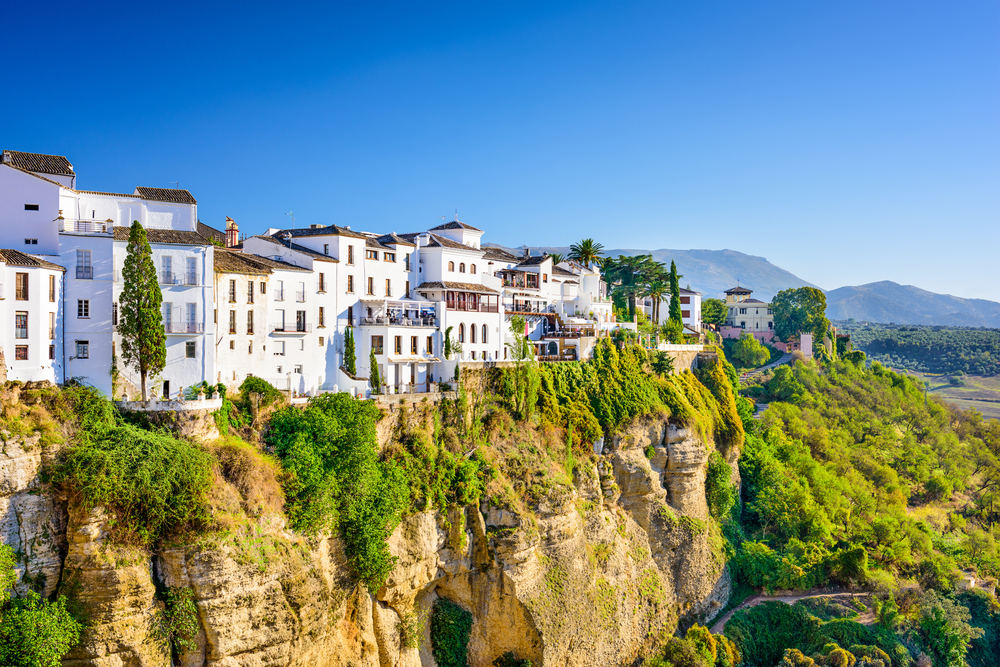
How to get to Ronda
The city of Ronda is one of the most accessible in the province of Malaga. Its location west of the capital of the Costa del Sol allows you to reach it both by car or by public transport, as it is provided with a train and bus station.
If you choose the first option and you leave from Malaga, you will have to take the A-7 highway towards Cartama; then take the 234 exit to get into the A-357 road. Once you pass by the town of Ardales, take the A-367 road towards Ronda. Now, only 40 km separate you from the city of El Tajo. From west Costa del Sol, you can reach Ronda via the N-340 road, and then the A-376 until the city.
On the other hand, you can also reach Ronda via public transport, as the bus company Avanza provides four routes from the bus station of Malaga. The ticket costs €12.49, and it takes around 2 hours and a half to get to Ronda. Other bus companies that offer this service are Damas, Comes and Portillo.
History of Ronda
The paintings of the Cueva de la Pileta (Benaoján) are proof that the area surrounding Ronda has been inhabited since the Paleolithic Era, and some archaeological rests discovered in the Old Town of Ronda prove that humankind used to live here in the Neolithic Era.
Phoenicians, Greeks, Carthaginians, and Romans also settled in the area throughout the centuries. The Romans called it Laurus and built the now-disappeared Castle of Laurel, from which they used to police the belligerent Celtiberian tribes. However, it was Acinipo, and not Ronda, the town that had the most significant importance during those times, which is also demonstrated by the fact that it coined its own money.
After the fall of the Roman Empire, Ronda and Acinipo suffered the Germanic invasions, and Acinipo was also occupied by the Bizhantians, who left it for good in the 7th century when the Visigoths reached Ronda.
When the Arabs got to the city, it became known as Izna Rand Onda, and it started to obtain a certain political and economic protagonism.
Just like any other town in the province of Malaga, Ronda underwent a period of decadence that lasted approximately until the 18th century, when the city opened to the district of El Mercadillo with the construction of Puente Nuevo and its famous bullring. The French troops, led by Joseph Bonaparte, entered in Ronda in 1810 and stayed for two years.
The railway that was inaugurated in 1891 let Ronda enter the 20th century with notably socioeconomic development.
Bullring of Ronda
We suggest the bullring to be your visit’s starting point, as from here you can discover the city on foot and quickly reach the must-sees. The Plaza de Toros, located in the city centre, was built in the 18th century, following the project of the same architect that designed the Puente Nuevo. The bullring of Ronda stands out for being the oldest in Spain, and it is considered to be one of the cradles of modern bullfighting. It can welcome up to 5,000 people, under a shaded set of stands.
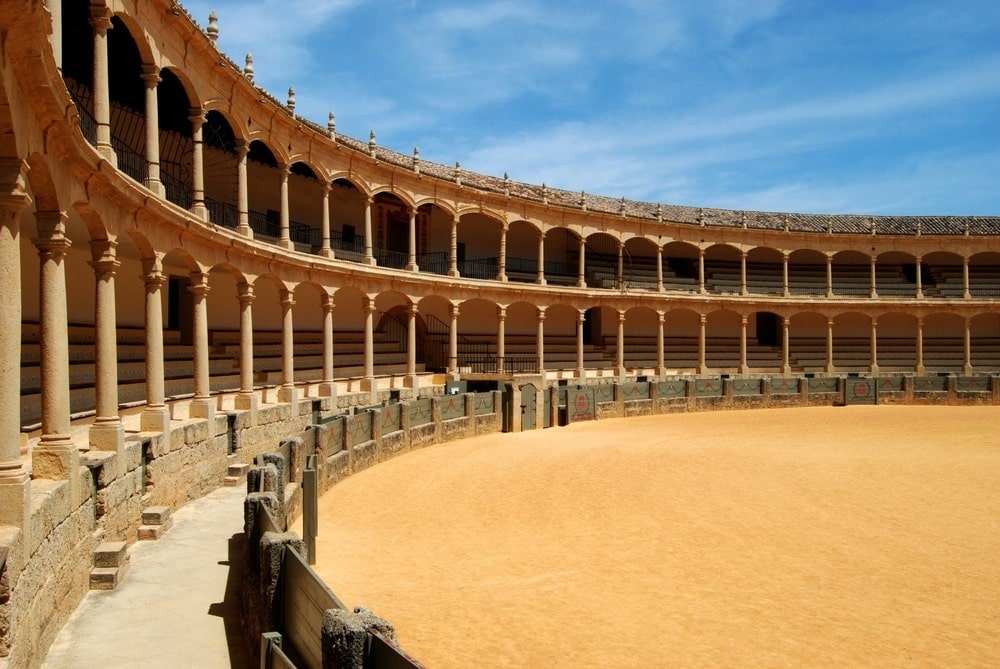
In the basement of the bullring, you will find the Museo Taurino (Bull-fighting museum), dedicated to two dynasties of Ronda’s Toreros: the Romeros and the Ordóñez.
The bullring is also the see to the Real Maestranza de Caballería de Ronda, founded by King Philip II in 1572, for the military and equestrian training of the aristocracy.
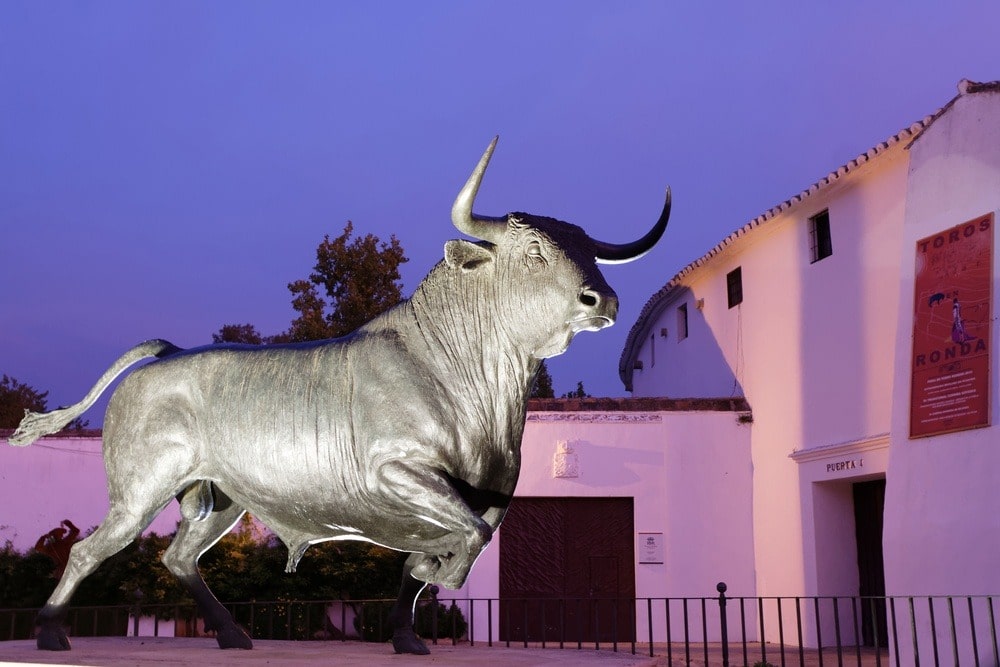
- Adults: €8 (€9.50 with audioguide)
- Groups from 15 people: €7
- Free entrance (for EU citizens): Monday (8 am – 10 am), Tuesday and Wednesday (9 am – 10 am)
Paseo de Blas Infante
The gardens of Blas Infante are located right near the bullring. This small urban park offers quietness and relaxation in the city centre of Ronda. It is dedicated to the politician, whose ideal of Andalusian nationalism defined the concept of Andalucia as an autonomous region inside a federal Spain.
Besides, right near the entrance of the park, you will find a monument honouring the American writer Ernest Hemingway, who stayed in Ronda during the summer of 1959.
Puente Nuevo
The Puente Nuevo will surprise you with its landscapes. As you can check for yourself, the bridge is spectacular and the city’s main attraction, being Ronda’s standard postcard.

The bridge was built in the late 18th century, due to the need for communicating the oldest district of the city with the newest area. They are separated by the gorge El Tajo, created by the river Guadalevín, at the height of more than 100 metres.
The Centro de Interpretación del Puente Nuevo (Visitors Centre of Puente Nuevo) is located on a lower floor, which you can reach through a staircase between the bridge and the hotel Parador. Thanks to an audiovisual itinerary and multimedia panels, you will discover the history of the bridge and its relationship with the surrounding landscape.
- Monday to Friday: 10 am – 6 pm
- Saturday, Sunday and Festive: 10 am – 3 pm
- Adults: €2,5
- Groups from 10 people, people less than 26 y.o. and retirees: €2
- Less than 14 y.o.: free
Casa del Rey Moro
After crossing the bridge, stroll along Cuesta de Santo Domingo street to get to the palace Casa del Rey Moro. Despite its name (House of the Moorish King), the building was built only in the 18th century, when the Moors had already left Ronda. The precious hanging gardens of Jean Claude Forestier were built in 1912.
The part that actually dates back to the Moorish domination is the precious water mine that is accessible from the gardens. The Moors perforated the rock 60 metres deep to avoid the water reserves being attacked, thus relying on a natural water reserve, connected with the surface via a complex staircase system that reaches the River Guadalevín.
You too can reach the bottom of the mine: just keep in mind that some parts are poorly illuminated, and the steps are sloping.
Plaza Duquesa de Parcent
The Duquesa de Parcent square is known to be one of the most beautiful in Ronda. Because during the Moorish domination, it used to welcome the town’s main buildings, you can now find several monuments and historical palaces that are worth a visit.
Church of Santa María la Mayor
It was built on the rests of the ancient mosque, between the 16th and 18th century, which provides its architecture with several solutions, belonging to the different architectonic styles that followed in the centuries. The church preserves the mihrab from the Moorish mosque; its three naves are from the late Gothic; the chapel is of Renaissance style, while several other features are Baroque.
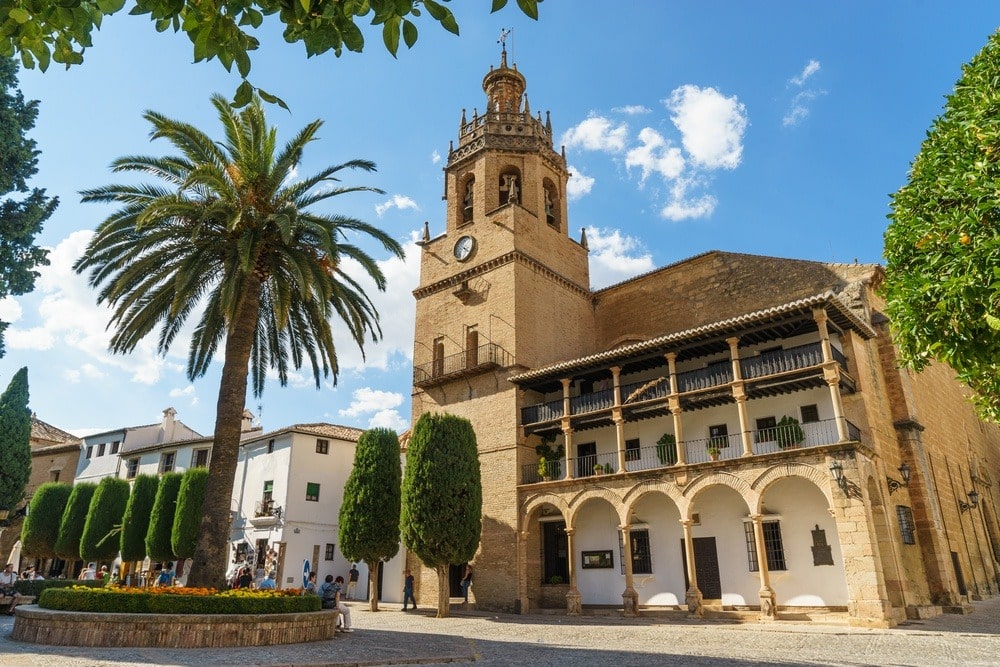
- Saturday: 10:30 am – 2 pm
- Adults: €4.50
- Groups and retirees: €3
- Students and people with reduced mobility: €2
- Less than 10 years old: free
Town Hall
The Town Hall of Ronda is also located in the Duquesa de Parcent square. It was built in 1734 on old shops of the square and was originally used as militia headquarters. It has three floors and a basement, and its facade is decorated with arches and pillars. Inside, the Salón de Plenos stands out.
Convent of Clarisas de Santa Isabel de Los Ángeles
The square’s third building is this 16th-century convent. Its facade presents the stone badge of the order of Saint Francis of Assisi.
Churches of Ronda
If you fancy churches and religious architecture, you should take a look at the itinerary created by the numerous churches of Ronda.
Convent of Santo Domingo
Where: 1, Armiñán street
What: convent founded during the kingdom of the Catholic Monarchs, it was the see to the Spanish Inquisition for years. Nowadays, it welcomes the Palacio de Congresos de Ronda, for which the opening hours are subject to the celebration of events.
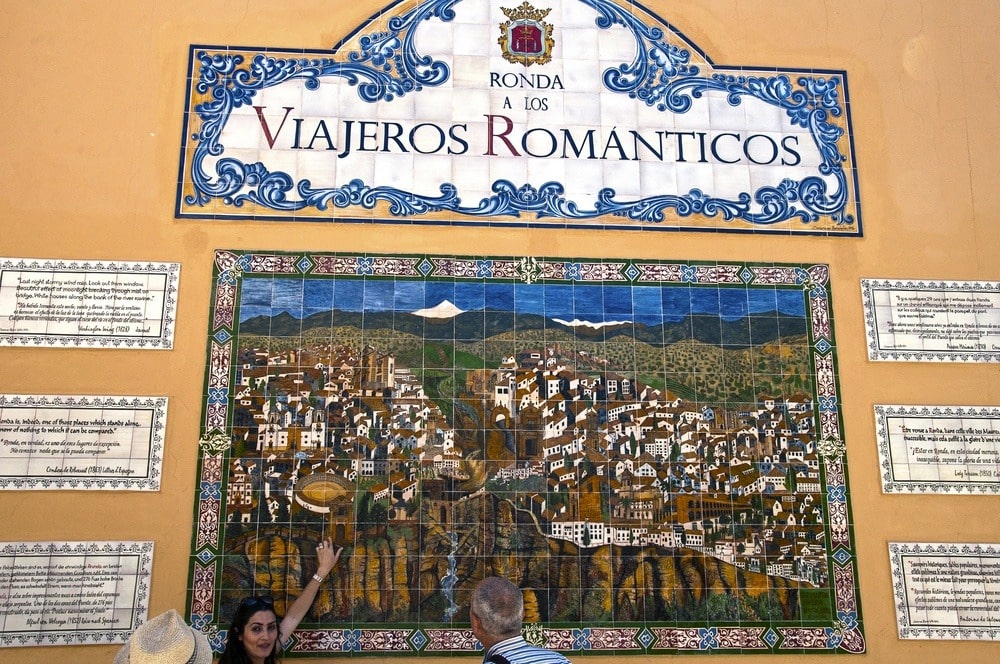
Church of la Virgen de la Paz
Where: Beato Fray Diego José de Cádiz street
What: this church honours the Virgen de la Paz (Virgin of the Peace), Ronda’s patron saint. A 17th-century image is kept in its interior, as well as the rests of the fray that gives his name to the streets. They are preserved in a silver vase at the feet of the patron saint.
Church of Espíritu Santo
Where: Espíritu Santo street
What: this church was built in 1505 where an Almohad defensive tower used to be, which was destroyed during a siege of the Christian troops. Sobriety and a fortress-like vibe characterise the outdoors, while the indoor combines Gothic and Renaissance elements. In the Baroque-style altarpiece of the main chapel, there is the painting of “Coming of the Holy Spirit”.
Church of Santa Cecilia
Where: square of Los Descalzos
What: 17th-century church with a striking Baroque facade of the 18th century.
Church of El Socorro
Where: Carrera de Espinel street
What: massive church in Neo-Baroque style.
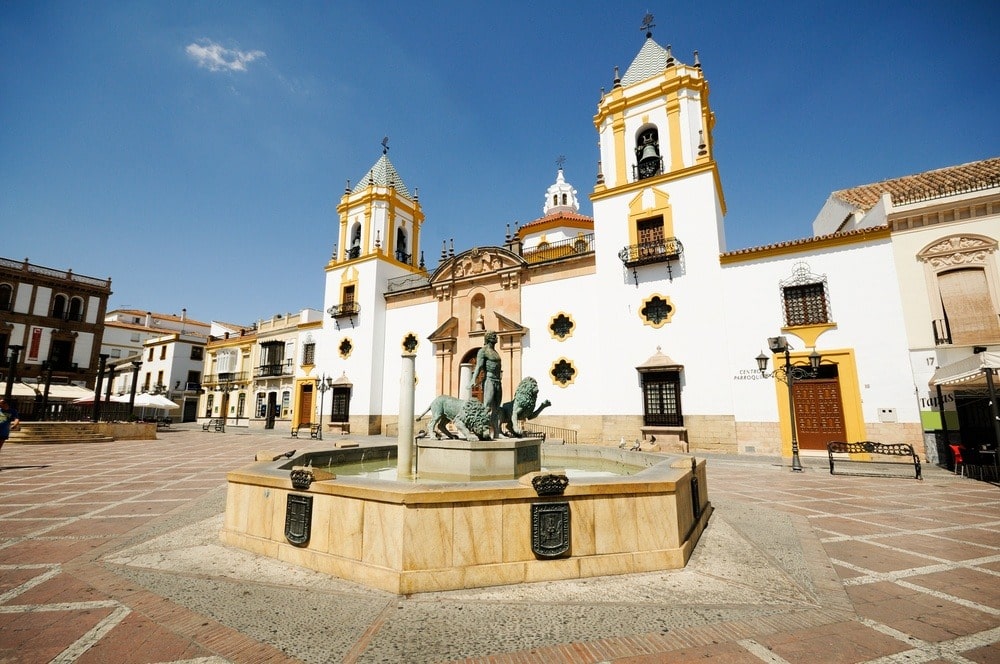
Church of La Merced
Where: Alameda del Tajo
What: in this church, the arm of Santa Teresa is kept, which was of great importance to the Spanish dictator Francisco Franco.
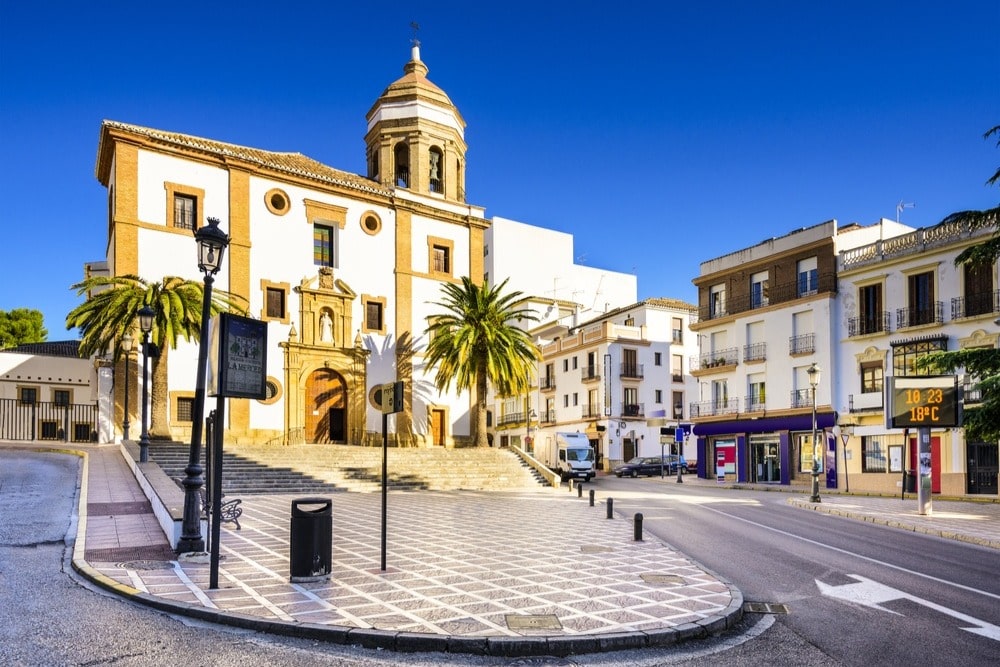
Shrine of la Virgen de Los Dolores
Where: Santa Cecilia street
What: this 1734 shrine welcomes an altarpiece with a painting of the Virgin of Sorrows. On two of its columns, you can spot four hanged men, which reminds of the public executions that used to take place here centuries ago.
Mozarab Monastery of Virgen de la Cabeza
Where: 2 km from the city centre
What: complex that includes accommodations for monks, cells for a small community and a church carved in the rock. The latter was built between the 9th and 10th centuries by the Christians, under the Moorish domination.
Arab Baths
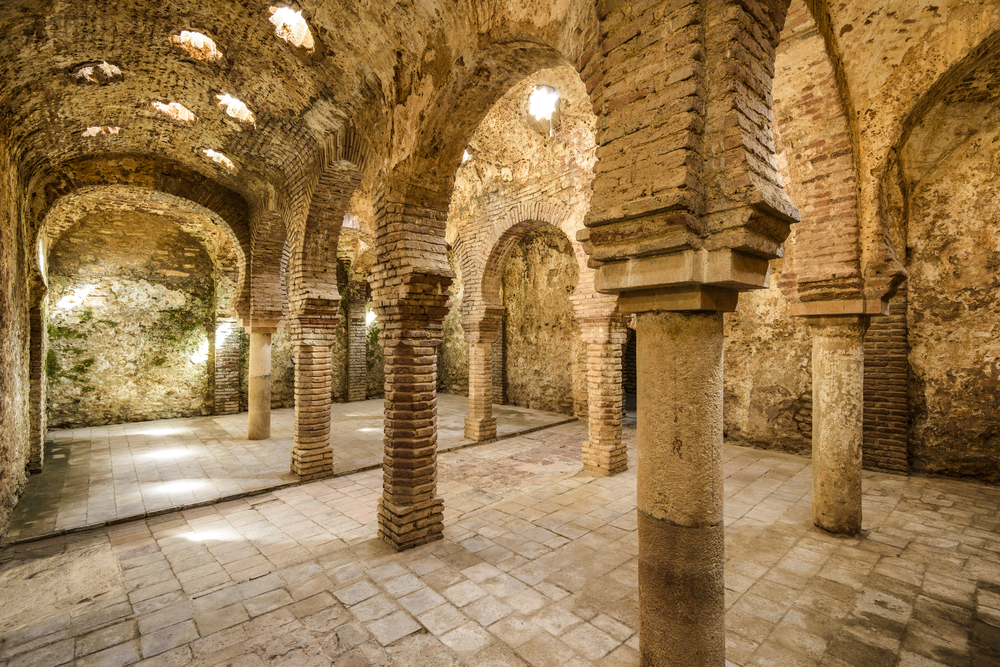
The Old Jewish neighbourhood welcomes the perfectly-preserved Arab Baths, a Moorish thermal building, built between the 13th and 14th centuries. When Ronda got conquered by the Christians, the Baths ceased to be used and were buried by the swellings of the River Guadalevín.
When the Duquesa de Parcent had the gardens built in this area, the first rests of the Baths came to light, until the State bought the site in 1935.
Nowadays, you can visit the three halls (cold, lukewarm and hot water) and the roofs with spotlights in the vaults. The skylights are star-shaped, which creates a dimly-lit ambience, ideal for relaxation.
- Thursday to Saturday: 10 am – 6 pm
- Sunday and Festive: 10 am – 3 pm
- Adults: €4.50
- Groups of more than 10 people, students less than 26 years old and retirees: €3
- Less than 14 years old: free
Museums of Ronda
Museo Municipal
Where: Palace of Mondragón, in the Mondragón square
The palace of Mondragón was built during the Moorish domination, in the 14th century. The following renovations ended up deleting its more peculiar features, although its architecture is still an example of harmony between lines and volumes.
Museo del Bandolero
Where: 65, Armiñán street
In this museum, you can get in contact with one of the most peculiar 19th-century phenomenon: the banditry.
Museo de la Caza
Where: 59, Armiñán street
It offers an overview of the Serranía de Ronda’s centuries-old tradition of hunting.
Museo Temático Lara
Where: 29, Armiñán street
Located in the Condes de Conquista palace, this museum offers a spectacular collection of antiques and masterpieces.
Museo Joaquín Peinado
Where: plaza del Gigante
This museum is located in the renovated Palace of Marqueses de Moctezuma. It welcomes 200 masterpieces, including oil paintings, watercolour paintings, and drawings and graphic pieces of the Ronda-based painter Joaquín Peinado, one of the most significant artists of the School of Paris.
Viewpoints of Ronda
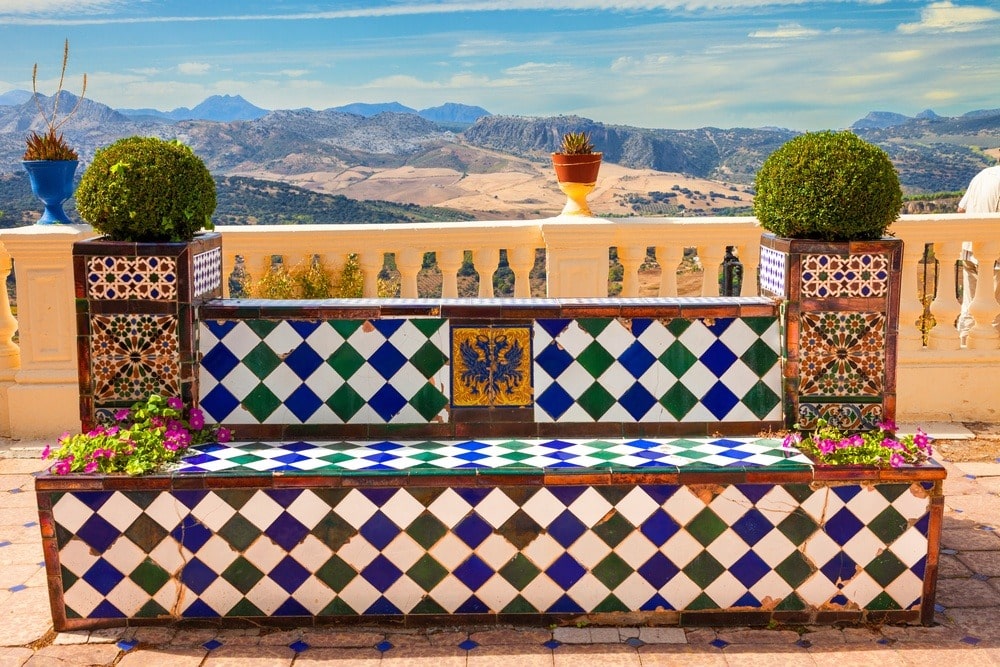
Thanks to its spectacular location, Ronda relies on several viewpoints so that you can enjoy its magical landscape and some breathtaking views.
Mirador de Ronda
The wonderful viewpoint of Ronda is located along the promenade of Blas Infante. From here, you can enjoy spectacular views of the valley of Guadalevín, and a considerable part of the region of Ronda, from a 200-mt height. This viewpoint is one of the most visited, and it provides lovely postcards of the city that will leave you breathless.
Mirador de Aldehuela
This viewpoint is located near the Puente Nuevo, right next to the convent of Santo Domingo. It offers spectacular views of River Guadalevín, the bridge and the hills of the Serranía de Ronda.
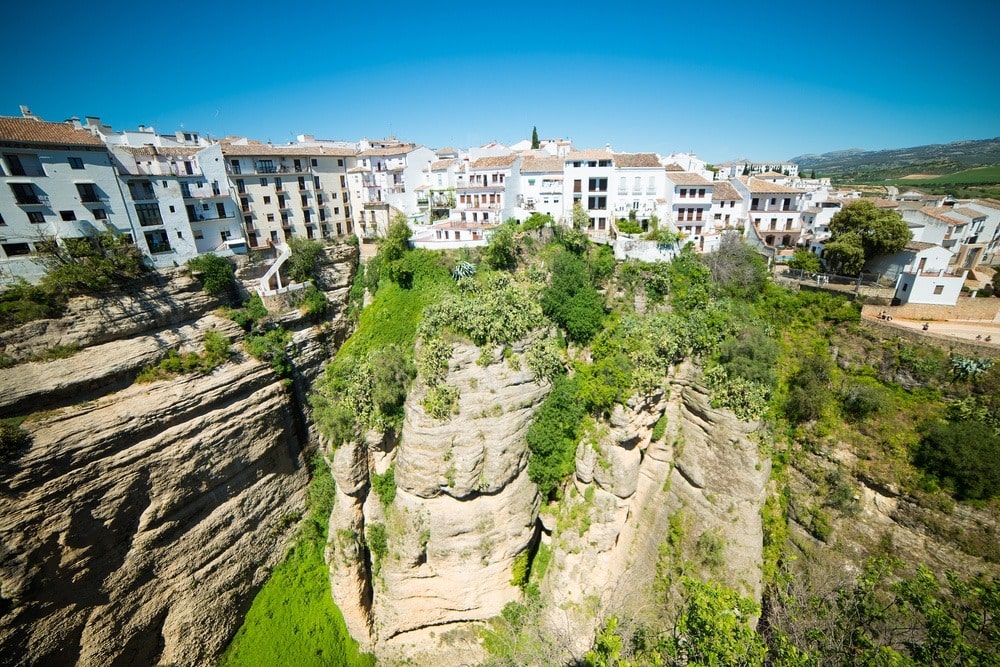
Casa Don Bosco
In the modern-style house of San Juan Bosco, you can sit in dreamlike gardens and enjoy the views over the fabulous landscape that extends at your feet.
Mirador del Viento
As you go leave the historic centre of the city, towards the western area, you will come across two other viewpoints. The Mirador del Viento allows you to enjoy the views of the hillside that envelops Ronda, from the smooth hills to the cultivated fields.
Mirador del Puente de Ronda
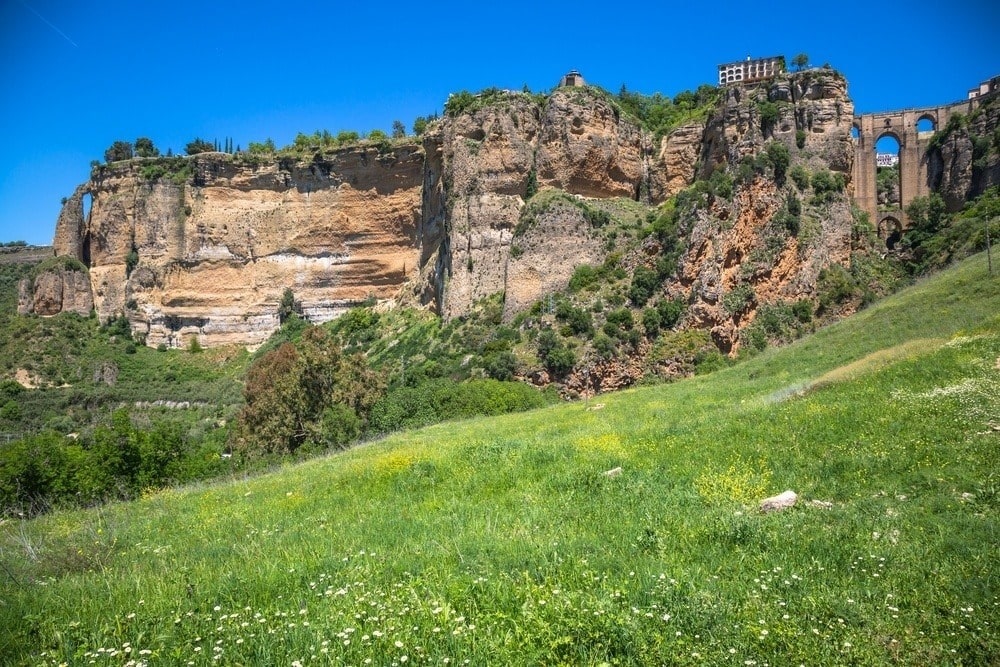
A few metres from the Mirador del Viento, you will find a particular viewpoint that lets you enjoy the views of the Puente Nuevo from an utterly unknown perspective.
Acinipo
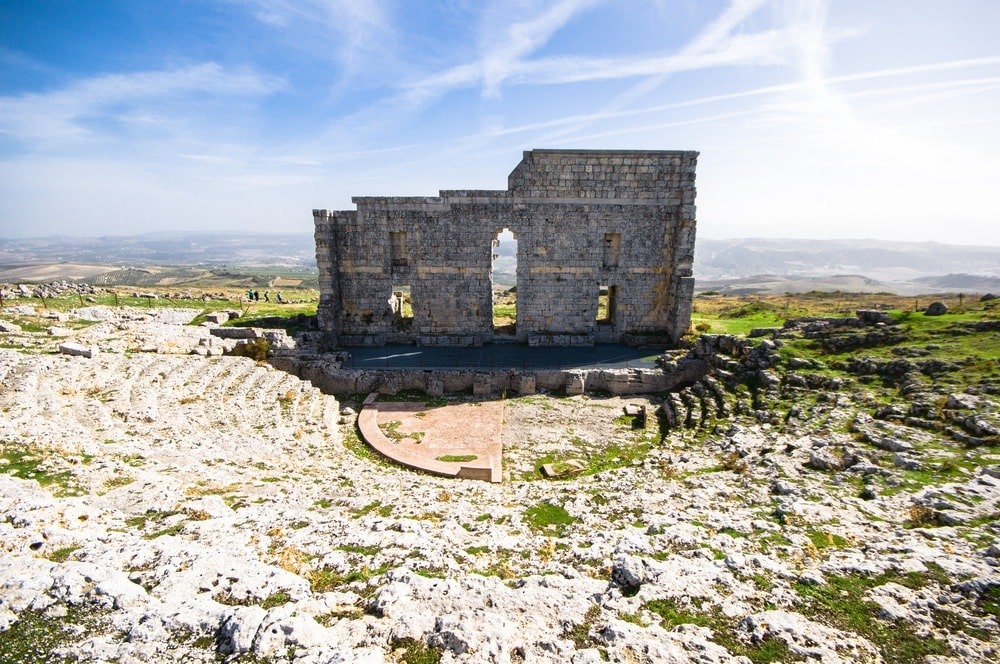
The Roman site of Acinipo was mistakenly known as Ronda la Vieja (Old Ronda), as it was thought that this was the first settlement of the city. Located 21 km from Ronda, on a plateau at 980 metres above sea level, Acinipo became one of the most important cities of Roman Andalusia.
Nowadays, only the 1st-century-b.C. theatre can be seen, which was built on a slope. The grandstand and the orchestra pit have been preserved in good conditions. Besides, you can also spot the remains of Roman baths and the official temple.
Other must-sees of Ronda
Casa del Gigante
This Moorish house has been perfectly preserved. According to some historians, it was built in the 14th century, at the same time as the Alhambra of Granada. In its interior, the indoor patio stands out.
Castillo del Laurel
What nowadays welcome the school building of Sagrado Corazón, it was once the castle of Laurel, a 2nd-century-b.C fortress. It was converted into an Alcazaba by the Moors, occupied by the Christians and destroyed by the French troops in 1812, as they were leaving the region.
Puerta de Almocábar
Located south of the church of Espíritu Santo, this entrance door was built between the 13th and 14th century, as part of the old walls that enveloped the city.
In the left side, the Puerta de Carlos V was placed. This door has a Renaissance style, and it’s rounded off by the badge of Asturias dynasty.
Puente Viejo
The old bridge was built in 1616. After the fall of the Puente Nuevo in 1741, it became the main communication road between the districts of Ciudad and Mercadillo.
Fuente de Los Ocho Caños
This stone fountain features the badge of the city, and it’s located in the Real street. It has two sides, one with the famous eight pipes (caños in Spanish), and the other that serves as a tank.
Your holiday home in Ronda
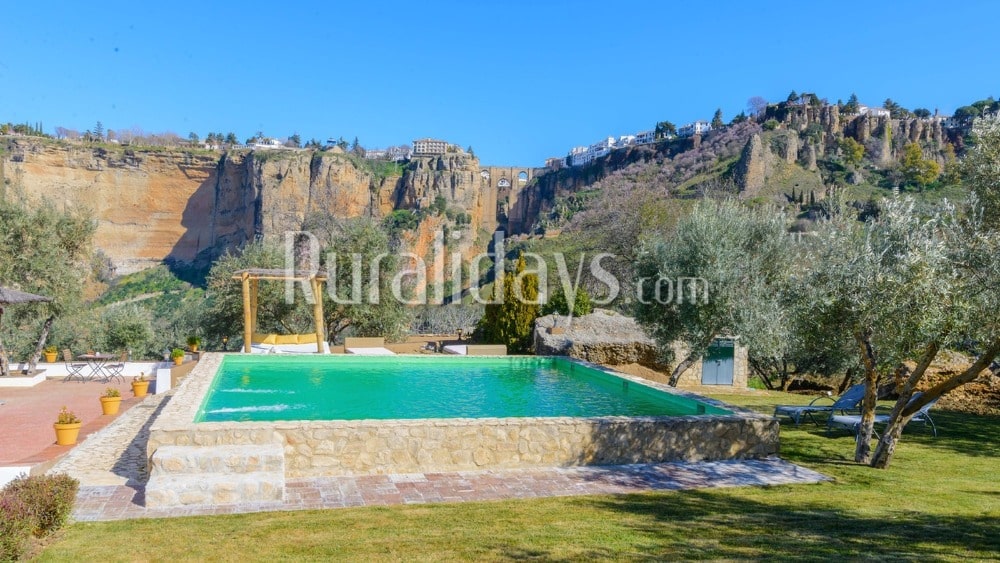
To enjoy the authentic vibes of Ronda, you should accommodate in one of the holiday homes in its surroundings. Discover the best holiday homes in Ronda, and book the one that suits you best! You will find spectacular villas with private pool with spacious gardens and set in a completely quiet environment. The cherry on top: you can enjoy the views of the spectacular Tajo de Ronda firsthand.
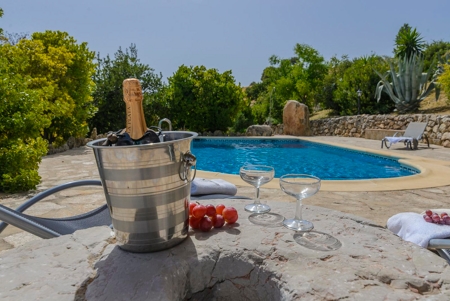
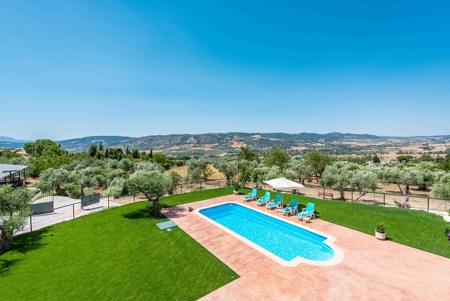
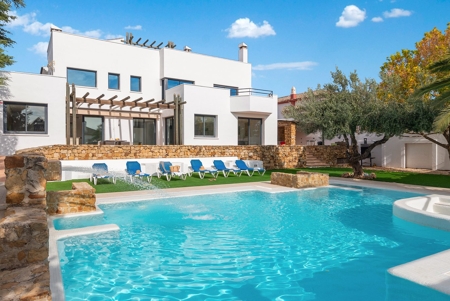
Festivals and events in Ronda
Virgen de la Paz
When: January 24th
Ronda’s patron saint is taken back to its sanctuary on January 24th, which is a local festive day. The procession usually starts late in the morning, after the mass honouring the Virgin.
Semana Santa
When: in 2023, from April 2nd to 9th
Thanks to the steep geography of Ronda, the Holy Week has been developing in an independent way, thus providing the numerous processions with a marked personality and attractiveness. Besides, the images that are carried in the processions have a great artistic value.
Feria de Mayo
When: in 2023, from May 12nd to 14th
The May fair is one of the oldest in Andalucia, cattle fairs wise. It starts with the Feria de la tapa and, then, during the following days, there are cattle exhibitions, oil tastings, the annual contest of exhibition dogs, and the pure Spanish breed horses contest “Ciudad de Ronda”.
Romería de la Virgen de la Cabeza
When: in 2023, May 7th
The pilgrims take the image of the Virgin from the church of Santa María de la Encarnación to the Mozarab hermitage of Virgen de la Cabeza.
Procession of María Auxiliadora
When: May 24th
This the procession ends the celebrations honouring María Auxiliadora.
Festival del Cante Grande
When: mid-August
This flamenco festival is one of the oldest in the province of Malaga. You can attend authentic Flamenco exhibitions, with the best voices of the Spanish panorama. The festival takes place in the Alameda del Tajo.
Feria de Pedro Romero
When: in 2023, from August 28th to September 3rd
Ronda’s most famous fair honours the torero Pedro Romero. To this goal, mainly tauromachy celebrations take place all week long. The two most important events are the Cabalgata de la Feria and the Corrida Goyesca (on Saturday).
Real Feria de San Francisco
When: first week of October
The district of San Francisco celebrates Saint Francis with several activities, processions, the cattle fair, sports tournaments and stands with music and the most festive ambience.
Día del Tostón
When: November 1st
Just like in several other towns of the province of Malaga, Ronda celebrates the día del Tostón. During this culinary fair, which takes place in the Ruedo Alameda from 6 pm, you can taste several traditional dishes for free, among which the toasted chestnuts stand out.
Cuisine in Ronda
The marked mountain traits of Ronda inevitably define the local gastronomy, which features traditional dishes such as conejo (rabbit) a la rondeña, the gazpacho a la serrana, the sopa de alcachofas (artichoke soup), the champignon-mushroom-filled loin, and the casserole of pork leg. The tasty migas rondeñas, with spicy pork sausage, and tortilla al estilo Ronda also stand out. The area’s charcuteries are especially famous for their quality.
Dessert-wise, the yemas del Tajo (made with sugar, eggs and syrup) take the cake 😉 Also, the products made in the enclosed monasteries don’t lag behind, especially those of Mercedarians and Franciscans.
Interesting Data about Ronda
- Surface: 481.31 km2
- Number of inhabitants: 33,978 (2018)
- Demonym: rondeño
- Location: North of Serranía de Ronda region, between the Natural Parks of Sierra de las Nieves, Grazalema and Alcornocoles. The urban centre sits 740 mt above sea level and 113 km from Malaga.
- Average rain falls: 650 l/m2
- Average temperature: 15º C
- Webpage: http://www.turismoderonda.es/es
Tourist office of Ronda

Paseo Blas Infante, s/n
Tel: (+34) 952 18 71 19
Web: http://www.turismoderonda.es/es/informacion-basica/catalogo-de-servicios/turismo/oficina-de-turismo/item/688-oficina-municipal-de-turismo-de-ronda
Email: [email protected]
Opening hours: from Monday to Friday, 10 am – 6 pm (to 7 pm in summer); Saturday, 10 am – 5 pm; Sunday and Festive days, 10 am – 2.30 pm
Do you want to come and enjoy the monuments and panorama of Ronda?



